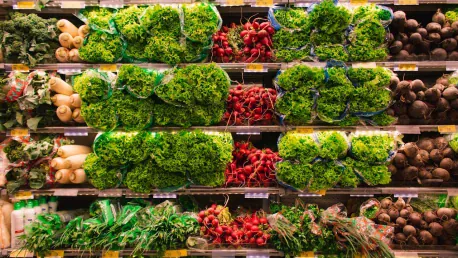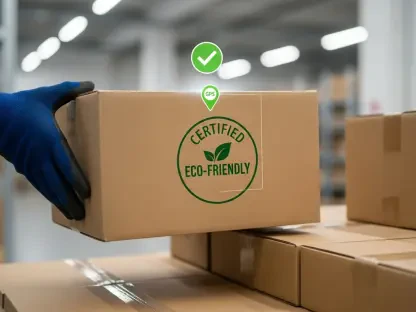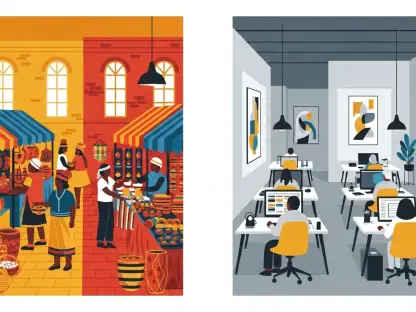The global food system is a complex network that impacts every aspect of human life. From farmers to consumers, and the myriad intermediaries in between, understanding how to secure this system against future uncertainties is crucial. With environmental challenges, socio-economic shifts, and technological advancements intersecting, it’s essential to dissect how sustainable practices and innovations can fortify our food system for generations to come.
Understanding Current Food System Vulnerabilities
The modern food system functions as a tangled web of interdependencies, involving not just the cultivation of food but also its transportation, processing, and retailing. This complexity renders the system inherently fragile and susceptible to numerous disruptions. Key factors such as climate change, biodiversity loss, and geopolitical tensions serve as prominent destabilizers.
Climate change contributes to extreme weather conditions that can destroy crops and reduce yields significantly. Biodiversity loss exacerbates this vulnerability by narrowing the range of crop varieties, making the system overly reliant on a limited number of staple crops. Although there are approximately 7,000 edible plants in the world, only 150 are widely cultivated, with just three crops—rice, wheat, and maize—providing 60% of the world’s caloric intake. This narrow genetic base heightens the risk of diseases and pests, further threatening food security.
Geopolitical tensions also present significant risks, as they can disrupt supply chains, leading to food shortages and rising prices. Socio-economic disparities compound the problem, disproportionately affecting lower-income communities and exacerbating food insecurity. These multilayered vulnerabilities underscore the urgent need for a resilient and adaptable food system capable of withstanding diverse challenges and ensuring equitable access to nutritious food.
The Promise of Regenerative Agriculture
Regenerative agriculture presents a compelling pathway to improve both agricultural productivity and environmental health. Unlike conventional farming methods that often degrade the soil and contribute to greenhouse gas emissions, regenerative practices aim to restore and enhance the land. Techniques such as crop rotation, organic fertilization, and the promotion of biodiversity through field margins not only increase yields but also improve soil health and overall ecosystem vitality.
Businesses are increasingly recognizing the value of these practices and are investing heavily in their adoption. Nestlé, for instance, has committed $1.2 billion to support farmers in transitioning to regenerative agriculture. This substantial investment includes financial premiums and technical assistance, aiming to create a sustainable and profitable agricultural ecosystem. By sequestering carbon and building resilience against extreme weather, regenerative agriculture offers a proactive solution to climate change while promoting biodiversity and reducing dependency on a few staple crops.
The benefits of regenerative agriculture extend beyond environmental health. By improving soil quality, these practices ensure that farms can continue to produce food for future generations. Enhanced soil health leads to better water retention, reduced erosion, and increased resistance to pests and diseases. As a result, regenerative agriculture not only addresses immediate agricultural challenges but also contributes to long-term food system resilience and sustainability.
Long-Term Investments and Deferred Paybacks
Transitioning to sustainable agricultural practices requires significant upfront investment, with benefits that often take years to materialize. Unlike industrial sectors where investments can yield quick returns, agriculture demands patience and a long-term perspective. Investments in improved farming practices, ecosystem support, and advanced technologies often involve delayed paybacks, necessitating a shift in how businesses calculate returns.
Nestlé’s strategic roadmap to achieve net-zero emissions exemplifies this long-term vision. By focusing on reducing agricultural emissions and supporting ecosystems like forests, the company sets a precedent for sustainable business practices. These efforts are not solely about immediate gains but about securing a stable and resilient food future. The long-term nature of these investments underscores the importance of rethinking traditional business models and prioritizing sustainability over short-term profits.
To ensure a thriving agricultural sector, businesses must move away from short-term profit goals and embrace long-term sustainability. This shift requires a redefined approach to business value, one that incorporates environmental and social impacts. By aligning corporate strategies with sustainability goals, companies can contribute to a more resilient food system and drive meaningful change across the industry.
Technological Innovations Transforming Agriculture
Technology is playing a pivotal role in revolutionizing agriculture, making it more efficient, productive, and resilient. Advanced technologies such as artificial intelligence (AI), precision agriculture, and vertical farming are at the forefront of this transformation. AI, for example, can optimize supply chains, reduce food waste, and improve pricing strategies to minimize food spoilage and ensure efficient resource use.
Precision agriculture leverages sensors, GPS technology, and data analytics to monitor fields in real-time. This allows for targeted interventions, reducing the need for water, synthetic fertilizers, and pesticides. The benefits are twofold: increased productivity and reduced environmental impact. By using resources more efficiently, precision agriculture contributes to sustainable farming practices and enhances overall farm management.
Vertical farming offers another innovative solution, particularly for urban areas. By growing food in vertically stacked layers, these farms can produce crops year-round, independent of weather conditions. This method reduces transportation costs and greenhouse gas emissions associated with traditional farming while maximizing land use efficiency. Vertical farming also enables local food production, increasing food security and reducing the environmental footprint of agriculture.
Engaging Consumers and Communities
Consumer behavior plays a pivotal role in shaping the food system. Educating consumers about sustainable choices, fostering community-based initiatives, and promoting local food can drive systemic change. People-centric strategies ensure that the transition to sustainable practices is accepted and embraced widely, creating a sense of ownership and responsibility towards the food system.
Community-supported agriculture (CSA) programs exemplify this approach by connecting consumers directly with farmers. These initiatives promote the consumption of local produce, reducing carbon footprints and supporting local economies. By engaging communities, CSA programs foster a deeper understanding and appreciation of sustainable food systems, encouraging consumers to make more informed and environmentally conscious choices.
As consumer demand for transparency and ethical practices continues to rise, businesses that prioritize these values can build trust and loyalty. Labels like organic, fair trade, and non-GMO inform consumer choices and drive demand for sustainably produced food. By aligning their operations with consumer expectations for sustainability, businesses can contribute to a more resilient and ethical food system.
Policy and Regulatory Frameworks
Policies and regulations play a critical role in steering the food system towards sustainability. Government subsidies, taxes, and incentives can either encourage or discourage certain practices, shaping the behavior of farmers and businesses. For example, sugar taxes and proposed carbon taxes on agricultural products aim to promote healthier and more sustainable choices by influencing market dynamics and consumer behavior.
Effective policies create a level playing field, enabling businesses to compete while adhering to sustainable practices. Collaboration between businesses, governments, and other stakeholders is essential to ensure that regulations support, rather than hinder, the transition to sustainable agriculture. Joint efforts can drive meaningful change at scale, fostering a regulatory environment that incentivizes sustainability and innovation.
Policymakers must also focus on supporting research and development in sustainable agriculture. Funding for innovative technologies and practices can accelerate the adoption of regenerative farming methods, precision agriculture, and other sustainable solutions. By investing in the future of food systems, governments can help ensure long-term food security and resilience in the face of environmental and socio-economic challenges.
Conclusion
The global food system is an intricate web that touches every facet of human existence. From the farmers who grow our food to the consumers who enjoy it, and all the intermediaries in between, understanding how to secure this system against future uncertainties is vital. Today, we’re facing environmental challenges such as climate change and dwindling natural resources, which pose significant threats to food security. Additionally, socio-economic shifts like population growth, urbanization, and increasing income disparities further complicate matters.
Technological advancements offer hope but also come with their own set of challenges. Innovations in agriculture, food production, and supply chain management can enhance efficiency and sustainability, yet they require careful integration and foresight. To ensure a stable and resilient food system for future generations, we must focus on implementing sustainable practices. These can include anything from reducing food waste and conserving water to adopting renewable energy sources and supporting local farming communities.
Moreover, policy initiatives and international cooperation are crucial for creating a more equitable food distribution network. Investing in research and development can also unlock new solutions to existing problems. Ultimately, a collective effort from all stakeholders—governments, businesses, and individuals—is essential to build a food system capable of withstanding the diverse and evolving challenges of the 21st century.









